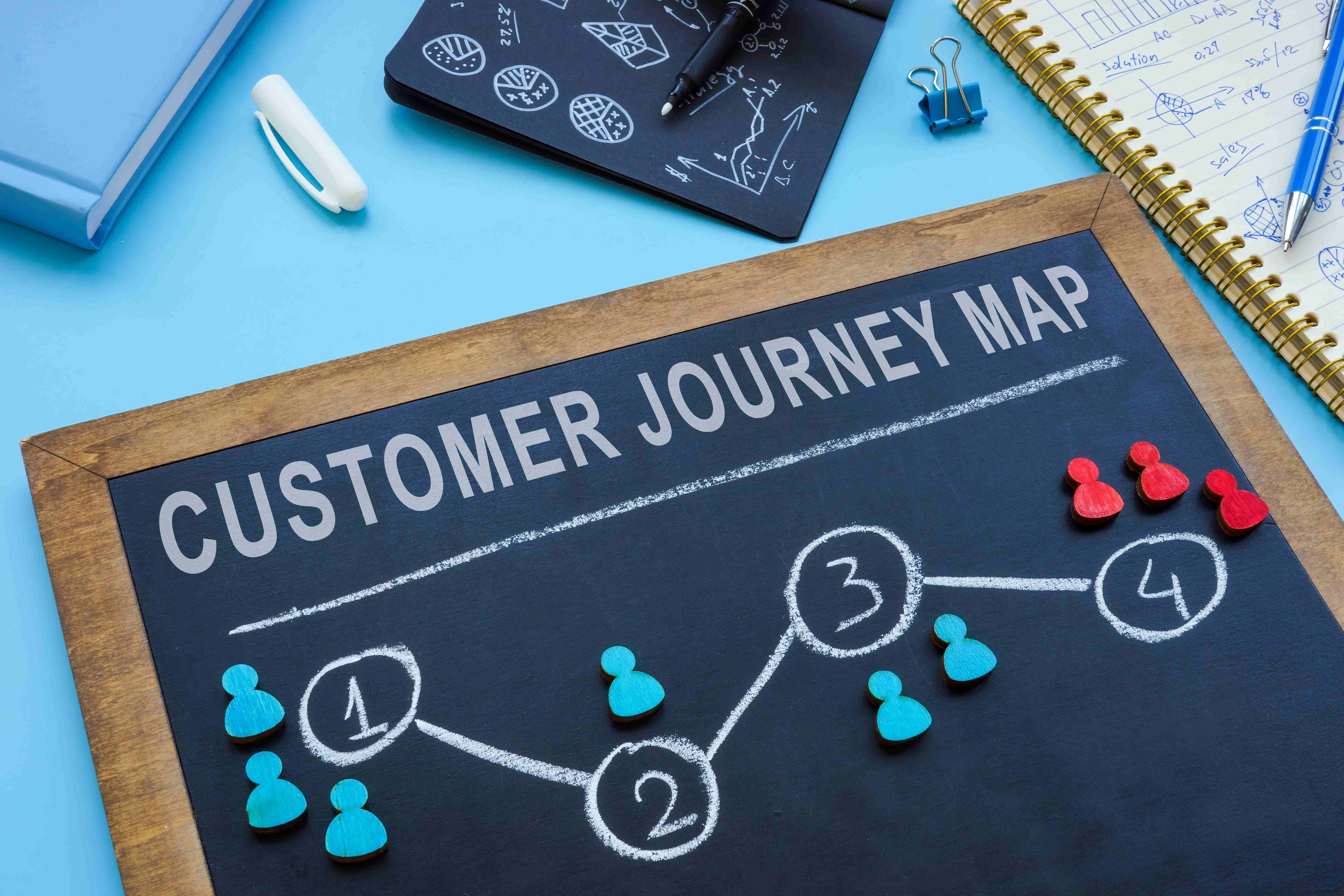In today’s competitive digital landscape, understanding your customers’ journey is critical for optimizing your SEO strategy and driving more organic traffic. By aligning your content and SEO efforts with every stage of the customer journey, you can improve engagement, boost conversions, and enhance your online store’s visibility. In this article, we’ll explore how customer journey mapping plays a vital role in SEO, provide actionable tips, and highlight the latest trends in conversion optimization and SEO strategy.
Table of Contents
- What Is Customer Journey Mapping?
- Why Customer Journey Mapping Matters for SEO
- Stages of the Customer Journey and Their SEO Importance
- Actionable Tips for Integrating Customer Journey Mapping with SEO
- Latest SEO Trends for Conversion Optimization
- Conclusion
- About Don Hesh SEO
What Is Customer Journey Mapping?
Customer journey mapping is a strategic process of visualizing and understanding the steps a potential customer takes from their first interaction with your brand to the point of conversion and beyond. It helps businesses identify key touchpoints, pain points, and opportunities to enhance customer experiences across every stage of the journey.
When integrated with SEO, customer journey mapping enables businesses to tailor content, keywords, and technical optimizations to meet customers’ needs at every phase, ensuring your website is aligned with user intent and maximizing search visibility.
Why Customer Journey Mapping Matters for SEO
Customer journey mapping plays a crucial role in SEO strategy by helping you:
- Target relevant keywords for each stage of the customer’s journey.
- Enhance user experience by aligning content with the specific needs of customers.
- Improve conversion rates by optimizing for the intent behind each search query.
- Drive organic traffic by creating content that answers the questions users are asking at various stages of their journey.
By understanding the different stages a user goes through before making a purchase, you can optimize your SEO efforts to ensure that your business is found at the right time and place.
Stages of the Customer Journey and Their SEO Importance
1. Awareness Stage
In the awareness stage, customers are just starting to realize they have a problem or need. They are looking for information and solutions, which means search queries tend to be broad and focused on research.
- SEO Strategy: Focus on informational content that answers common questions and provides valuable insights. Long-tail keywords and blog posts targeting “how-to” or “what is” queries are key here.
2. Consideration Stage
During the consideration stage, customers are evaluating different solutions to their problem. They are comparing products or services, which means they need more detailed and specific information.
- SEO Strategy: Create comparison pages, product reviews, and in-depth guides. Use mid-funnel keywords that focus on features, benefits, and pros and cons of your offerings.
3. Decision Stage
At the decision stage, customers are ready to make a purchase. They’re looking for clear, actionable information that will help them decide whether to buy from you.
- SEO Strategy: Optimize your landing pages with strong calls to action, clear product descriptions, and testimonials. Use transactional keywords that include phrases like “buy now” or “best [product/service].”
4. Retention Stage
In the retention stage, the goal is to keep customers engaged and encourage repeat purchases. SEO can support retention by creating content that nurtures the relationship.
- SEO Strategy: Focus on post-purchase content such as tutorials, FAQs, and customer support articles. Use branded keywords and ensure that your website offers a seamless user experience.
Actionable Tips for Integrating Customer Journey Mapping with SEO
1. Conduct Thorough Audience Research
Understanding who your customers are and what they need at each stage of the journey is essential. Use tools like Google Analytics, SEMrush, and customer feedback to gather insights into your target audience’s behavior.
- Actionable Tip: Identify the keywords and search queries customers are using at different stages and incorporate them into your SEO strategy.
2. Optimize Content for Each Stage of the Journey
Your content should be tailored to address specific customer needs at each stage of the journey. Blog posts, guides, and FAQs work well for the awareness stage, while landing pages and product descriptions are better suited for the decision stage.
- Actionable Tip: Develop a content calendar that covers topics relevant to each stage of the journey. Include internal linking between content to guide users smoothly from awareness to decision.
3. Use Data-Driven Insights to Personalize the Journey
SEO and personalization go hand in hand. By leveraging customer data, you can create personalized experiences that align with the user’s stage in the journey.
- Actionable Tip: Use dynamic content to display personalized recommendations, related products, or location-based offers that resonate with your audience’s journey.
4. Implement Schema Markup for Better Search Visibility
Schema markup helps search engines understand the content on your website, which can improve your chances of appearing in rich snippets and answer boxes.
- Actionable Tip: Use schema markup to highlight key elements of your website, such as product reviews, FAQs, and breadcrumbs, making it easier for search engines to categorize your content.
5. Track User Behavior and Adjust SEO Tactics
Customer journey mapping is not a static process. Regularly analyze user behavior data to determine how customers are interacting with your content and make adjustments to your SEO strategy accordingly.
- Actionable Tip: Monitor bounce rates, click-through rates, and conversion rates to identify areas where users may be dropping off. Use this data to tweak your SEO and content efforts for better results.
Latest SEO Trends for Conversion Optimization
1. AI and Predictive Analytics
Artificial intelligence and predictive analytics are being used to anticipate customer behavior and improve conversion rates. SEO strategies that incorporate AI-based tools can help businesses deliver more personalized and timely content to users.
- Trend Insight: Utilize AI tools for real-time insights on customer behavior and adapt your SEO efforts to match evolving user needs.
2. Voice Search Optimization
With the rise of voice-activated devices, voice search optimization is crucial for capturing users at various stages of the customer journey. Voice searches are often more conversational and question-based, making long-tail keywords and FAQs essential for SEO.
- Trend Insight: Ensure your content answers common questions in a natural, conversational tone to better align with voice search queries.
3. User Experience and Core Web Vitals
Google’s Core Web Vitals update emphasizes user experience, focusing on page load times, interactivity, and visual stability. Websites that provide a better experience are more likely to rank higher and drive conversions.
- Trend Insight: Improve your website’s loading speed, mobile responsiveness, and overall usability to align with Core Web Vitals and enhance your SEO performance.
Conclusion
Mapping the customer journey is no longer optional for businesses that want to thrive in today’s digital world. By aligning your SEO strategy with each stage of the customer journey, you can better meet user needs, improve engagement, and ultimately drive more conversions. From optimizing content for specific touchpoints to leveraging the latest trends in voice search and AI, customer journey mapping is a powerful tool that can transform your SEO efforts.
About Don Hesh SEO
Don Hesh SEO is a leading SEO consultant and Google Ads consultant dedicated to helping businesses enhance their online presence and drive organic traffic. Our expertise in AI-driven SEO strategies ensures that your business stays ahead of the competition. Partner with SEO Sydney to leverage the latest AI technologies and achieve your SEO goals efficiently and effectively.



